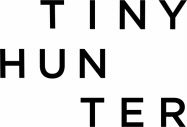Why your brand needs a Tone of Voice
When you think of a brand, most people think about what it looks like – the visual identity. But imagine for a second if Harley-Davidson started talking with a corporate voice. Or if the government started adopting slang or emojis in official correspondence. While these might be somewhat extreme examples, they demonstrate how a tone of voice – if not done right – could have a detrimental impact on a brand.
And then there are the brands that forget about their tone of voice altogether. They focus on looking good, but pay no attention to the power that language could have on reinforcing their brand personality and creating stand out. The result? A sea of brands that all sound the same.
WHAT IS A TONE OF VOICE?
A tone of voice, put simply, are guidelines for how your brand should sound. How it should speak. They advise people on what to say and how to say it. They’re not just for use by marketing and creatives either, but for every employee in the business. While tone of voice documents can differ, at Tiny Hunter we believe tone of voice guidelines should include:
- 3-5 principles for how your brand should sound. For example ‘sophisticated’ or ‘straight-talking’, with a description of what’s meant by the adjective
- Examples… nothing shows tone of voice better than seeing the principles brought to life through examples
- Rules for writing – perhaps your brand always speaks in first person? Or perhaps your brand has even more specific rules. For example, Uber’s tone of voice includes a legal section saying that Uber cannot be used as a noun or a verb
If you’ve gone through the brand strategy process, developing a tone of voice is a natural next step, shaped by the personality and values developed in your strategy. However, there are also plenty of tools available that can build on this, or help you create a tone of voice from scratch. A useful tool is the Nielsen Norman Group’s four dimensions which suggests that all brand’s voices are on a sliding scale of the following four comparisons.
- Funny vs. serious
- Formal vs. casual
- Respectful vs. irreverent
- Enthusiastic vs. matter-of-fact
Once you have worked out where you are on these scales, you can craft how your brand sounds with more detail.
And, although what is included in a tone of voice may vary, the ultimate result must be simple and usable guidelines you can use to establish a consistent style for communication across all channels – from how emails are answered, to how you communicate your brand messaging on your website and in the media. A tone of voice is also a great briefing tool for both internal and external content producers.
FIVE REASONS YOU NEED A TONE OF VOICE
Just in case we haven’t persuaded you just yet, here’s why a tone of voice should be an integral part of your brand toolkit:
- Memorable:The more consistent your brand, the more memorable it becomes
- Personality: Your tone of voice is a huge opportunity to reflect your brand’s personality
- Stand out: Done well, a tone of voice can actually help your brand stand out from the crowd
- Trust: If a customer recognises how your brand sounds, it will build trust and loyalty
EXAMPLES OF TONE OF VOICE
There are quite a few iconic examples of brand’s with well documented and stand out approaches to tone of voice. They provide an excellent source of inspiration and best practice.
Mailchimp has long reigned supreme in tone of voice, using a witty character and tongue in cheek repertoire to make sending emails fun and conversational. Their tone of voice guidelines are some of the most thorough and respected in the industry.
Uber is another brand with a very clear and consistent tone of voice. Their guidelines are accessible publicly for all. What we love about Uber’s guidelines is how many examples they include, and the fact that they show the tone of voice in situ on various brand assets..
A brand that is often cited as starting the conversation around tone of voice is UK-based smoothie and juice company Innocent. Their cheeky, fun tone of voice spurned a slew of copycats, but to this day they’ve held up as a brand that demonstrates the power of having a unique voice.
In Australia, skincare brand Frank Body uses an irreverent and quirky tone of voice that has helped it stand out in a crowded sector. Packaging includes fun statements such as ‘A scrub from down under, for use all over’ and ‘Guess what? You’ll be naked in one minute’. Memorable, and spot on for the target audience.
One of our clients – Stockspot – is an online investing platform. Sounds like it should sound corporate, right? After all, it’s finance. Instead, the brand uses a tone of voice which is conversational, to the point and purposefully sounds nothing like you think it will.
As you can see, there are plenty of brands out there that are using tone of voice to their advantage. The question is, are you?









